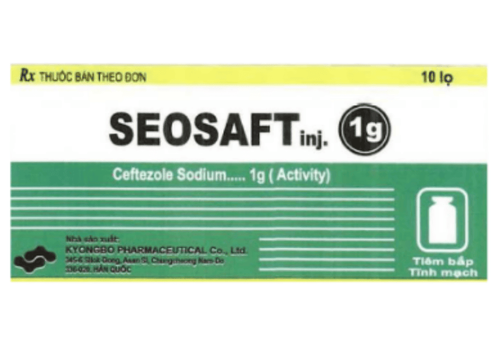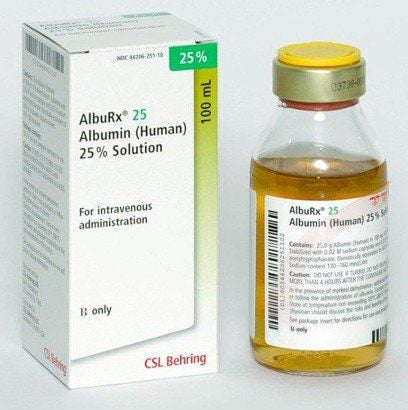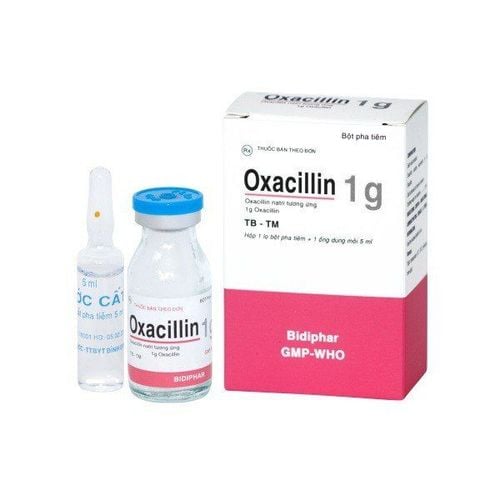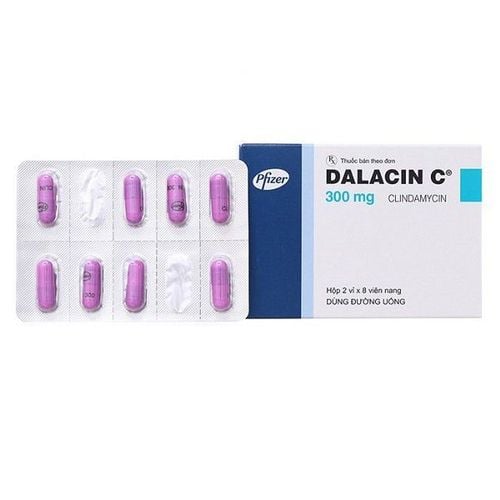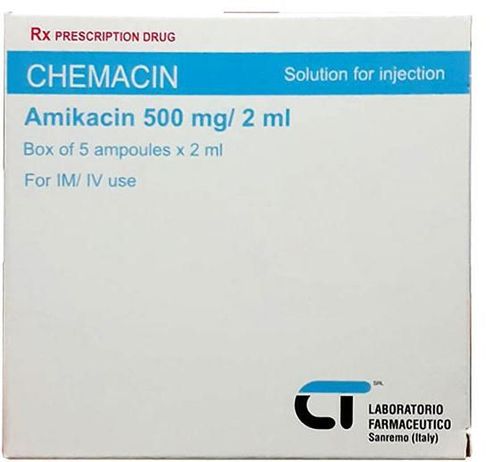This is an automatically translated article.
Bilclacin belongs to a group of drugs used to treat upper respiratory tract infections and lower respiratory tract infections, especially those caused by susceptible bacteria. To ensure effective use, users need to follow the instructions of their doctors, and at the same time refer to more information about the uses of Bilclacin in the following article.1. What is the use of Bilclacin?
1.1. What is Bilclacin? Bilclacin is a drug belonging to the group of drugs used to treat parasites, infections, viruses, and fungi. The drug has the ingredients Clindamycin (in the form of Clindamycin hydrochloride) 300mg and excipients just enough 1 tablet.
Bilclacin is a product of BV Pharma Joint Stock Company, produced and circulated in Vietnam. The drug has registration number VD-27673-17 and is made in the form of hard capsules, packing: Box with 3 blisters, each blister of 10 tablets or box with 5 blisters, each blister has 10 tablets (aluminum-PVC blister) .
1.2. What does Bilclacin do? Indications for use of Bilclacin:
Bilclacin is indicated for:
Prevention of endocarditis or bacterial infection caused by surgical transplants for patients who are allergic to penicillin or who have been treated for a long time with penicillin . Aspiration pneumonia or lung abscess , severe respiratory tract infection caused by anaerobic bacteria, Streptococcus; Staphylococcus and Pneumococcus. Intra-abdominal infections such as peritonitis and intra-abdominal abscess. Wound infection, festering (surgery or trauma). Blood infection. Neonatal fever (genital tract), severe infections in the pelvic region and female genital tract such as endometritis, nongonococcal tubal abscess, pelvic cellulitis and vaginal band infection vagina after surgery due to anaerobic bacteria. Traumatic eye injury. Acne is caused by bacteria that are resistant to other antibiotics. Gaseous gangrene. Contraindications:
Patients with hypersensitivity to clindamycin and lincomycin or other components of the drug
2. Usage of Bilclacin
2.1. How to take Bilclacin Tablets Bilclacin should be taken orally, before meals, and do not break or crush the tablets. 2.2. Dosage of the drug Bilclacin The duration of treatment with the drug Bilclacin depends on the type of infection, and the severity or mildness of the disease. In infections caused by group A beta-hemolytic streptococci, treatment with bilclacin should be continued for at least 10 days. In severe infections such as endocarditis or osteomyelitis, treatment for at least 6 weeks is required. Bilclacin is used at a dose of 150-300mg / time, every 6 hours. 450mg dose, every 6 hours if the patient has a severe infection. The dose of Bilclacin for children is 3 - 6 mg/kg body weight, every 6 hours. Children less than 1 year old or weighing less than 10kg use 37.5mg, every 8 hours. Handling when missed dose, overdose:
In case of forgetting dose of Bilclacin, it is advisable to supplement as soon as possible. However, if it is almost time for the next dose, skip the missed dose of Bilclacin and use a new dose. When using Bilclacin drug overdose, the patient should stop the drug immediately and go to the nearest medical facility for timely treatment.
3. Note when using Bilclacin
Use Bilclacin with caution in children less than 1 month of age, the elderly, and people with gastrointestinal disease. It is necessary to monitor liver and kidney functions, as well as blood cell tests during long-term treatment with Bilclacin. Because of the possibility of inflammatory bowel disease, before prescribing bilclacin, it is necessary to determine the patient's infection status. Patients should consider carefully, or consult a specialist doctor / pharmacist before using Bilclacin. Even though drugs have been tested, there are still risks when using them. Mothers need to carefully weigh the benefits, along with the risks, to both mother and baby. Do not arbitrarily use Bilclacin without carefully reading the instructions for use.
4. Side effects of the drug Bilclacin
At therapeutic doses, Bilclacin is well tolerated. However, the process of using Bilclacin, patients may still experience side effects such as:
Abdominal pain, diarrhea, nausea, vomiting, papules, erythema and itching. A few cases can cause pseudomembranous colitis. Effects on hematology: neutropenia or eosinophilia, agranulocytosis and thrombocytopenia. Usually, the side effects of bilclacin go away when the drug is stopped. If there are rare side effects that are not mentioned in the instructions for use, the patient should immediately notify the doctor or medical person for timely treatment.
5. How to store Bilclacin
The shelf life of Bilclacin is 36 months from the date of manufacture. Store Bilclacin in a cool, dry place, the temperature does not exceed 30°C, in the original packaging and protect from light. Keep Bilclacin out of the reach of children and pets. Above is all information about Bilclacin drug, patients need to carefully read the instructions for use, consult a doctor / pharmacist before using. Absolutely do not arbitrarily buy Bilclacin for treatment at home because there may be unwanted side effects.




